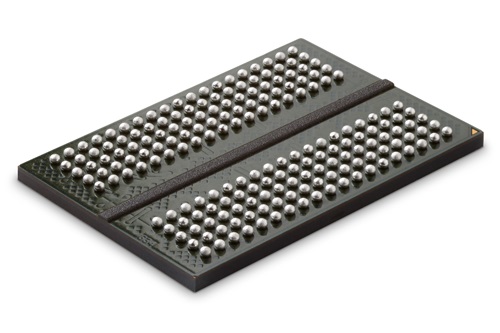Micron rolling out GDDR5X memory for new graphics cards

Micron has added its new GDDR5X memory chips to its product catalogue, the new memory standard that sees a step up from existing GDDR5 chips.
According to AnandTech, Micron has also released specifications of the chips it is shipping to its partners. At first glance, performance is better compared to GDDR5, but reportedly not as high as the maximum data rates that were in the original specification for GDDR5X.
AnandTech says the first chips have 8Gb (1GB) capacity, and run at 10Gb/s, 11Gb/s, and 12Gb/s in quad data rate mode with 16n prefetch. They use a 1.35V supply and a 1.8B pump voltage. Finally, they have 32-bit interfaces and comes in 190-ball BGA packages with dimensions of 14x10mm. All of this is shortened down into a nice simple acronym for the product marking: MT58K256M32JA.
If all that dense technical jargon is a mystery to you, what all this means to the average user is that there are three improvements over GDDR5. They have higher data rates, more flexible chip capacities, and better energy efficiency. Micron initially said it would offer 10-14Gb/s data rates, while the current maximum appears to be 12Gb/s. However an upgrade is something we may see in future updates.
Last year there were rumors from 3D Center that some of Nvidia's new Pascal GPUs, to be released this year, will use GDDR5X rather than HBM2 memory. A more recent report on a GPU shipment also lent credence to that theory. Both are rumors, but it's plausible that Nvidia would stick with GDDR for its more mainstream cards, saving HBM2 for the most expensive high-end GPUs. As we saw with the launch of AMD's Fury GPU last year, new tech doesn't come cheap.
AnandTech says that Micron customers are currently testing processors with GDDR5X memory controllers, which means that some GPUs from AMD and Nvidia do support the new technology and already exist.
Micron's clients are currently sampling GDDR5X, so we'll have to wait and see how long it'll be before we start seeing it on graphics cards.
The biggest gaming news, reviews and hardware deals
Keep up to date with the most important stories and the best deals, as picked by the PC Gamer team.

